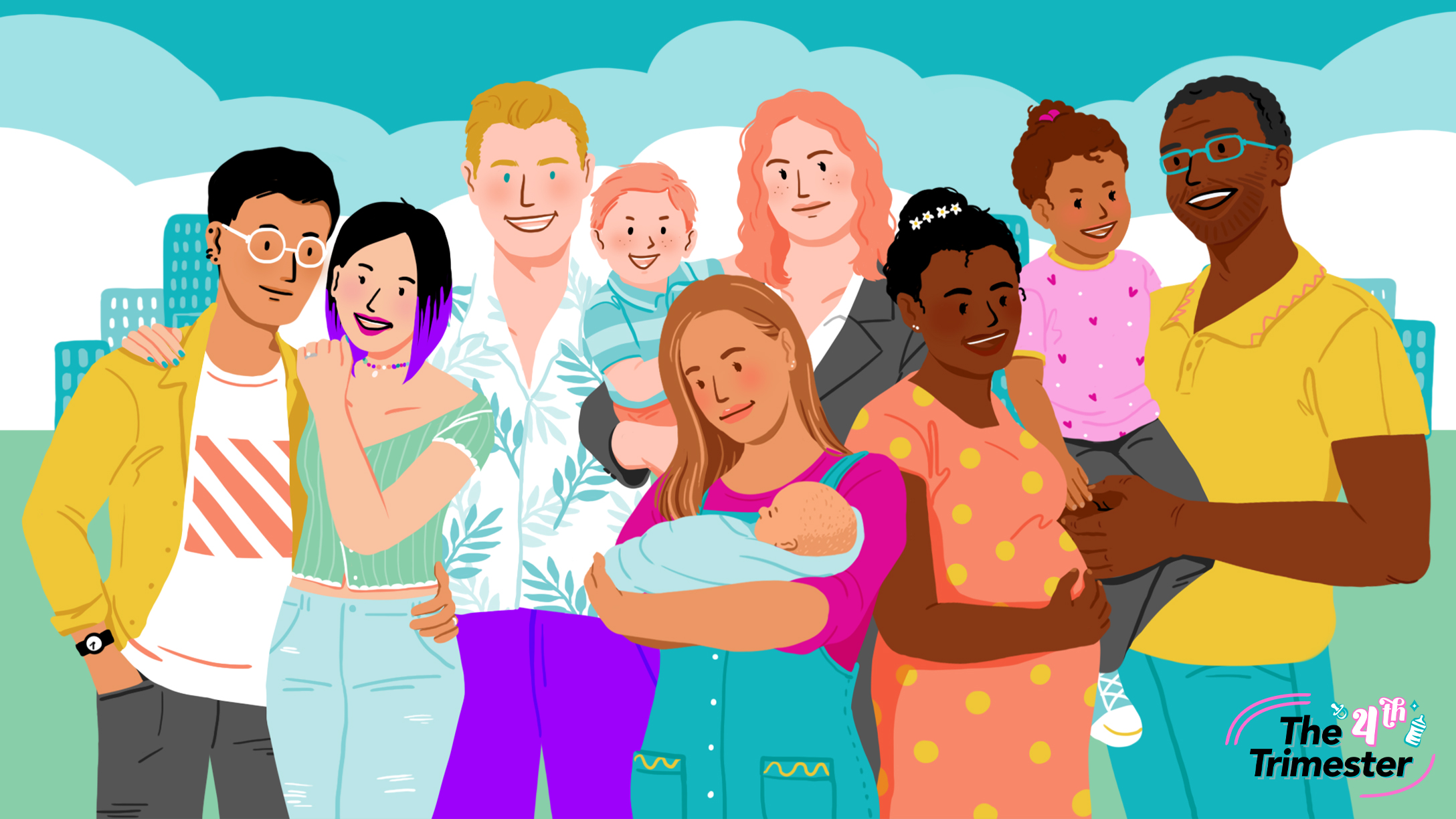
Despite 72% of all US mothers working either part-time or full-time, according to PEW Research, we still have a long way to go when it comes to offering a robust and equitable approach to maternity leave. As it stands, not only is the standard amount of postpartum care falling short, the playing field isn't level for all mothers in the US.
The fact is, the US ranks last among 41 nations when it comes to mandated parental and familial leave.

The recent survey detailed that of the 40 other nations surveyed, the minimum of mandated paid leave each nation was required to give citizens averaged out to a total of about two months.
Countries such as Estonia offer new parents a year and a half of paid leave, with other countries, like Japan and Bulgaria, providing a year.
In 2020, the US House of Representatives passed a bill that would provide both female and male federal workers with 12 weeks of paid leave to care for either a newborn or an adopted child starting by October 1, 2020.
The US maternity leave policies in effect are based on several factors.
In 1993, the US Department of Labor enacted the Family Medical Leave Act, which guarantees "12 weeks of unpaid job security to all public agencies, all public and private elementary and secondary schools, and companies with 50 or more employees." This covers any families bringing home a newborn, families who have recently adopted, to care for a sick immediate family member, or personal leave if the employee themselves is too sick to work.
The number of permitted weeks as well as financial assistance varies by the state. In the US, only California, New Jersey, New York, Rhode Island, and the District of Columbia have state-mandated paid leave plans in place. In 2017, Washington state passed a mandated paid leave program that took effect at the start of 2020.
Companies have the power to set their own leave standards, which can include partially paid leave to a full year of coverage.
"I am super lucky and get 16 weeks full pay through the company I work for," Kerri Engler, a mom of two, tells CafeMom. "They use the state benefits and supplement the rest of the income and days where necessary to make the full 16 weeks with pay. The company is super family-focused and our parental leave is given to mothers having the baby, which must be taken right away. Fathers/partners and couples that adopt can also take the same 16 weeks any time within the first year. I am super grateful for the time as I know not everyone has the same benefit of spending four months with their baby. Our company is based on Canada where our counterparts take up to a year of maternity leave! My employer definitely cares about the employees but also wanted to have a great parental leave policy to attract top talent."
For instance, NBC reports that Microsoft offers employees five months of paid leave to all new birth mothers and three months for fathers, adoptive parents, and foster parents. Netflix offers one full year of paid time off for mothers and fathers for both full-time and part-time employees.
But companies are not required to pay employees under FMLA — it merely protects the employees' right to take time and to return to their positions with no title changes or pay reductions.
In March 2018, according to the US Bureau of Labor and Statistics just 17% of all civilian workers had access to paid family leave, while 89% had access to unpaid family leave. Which means roughly 9.5 million of self-employed Americans, like waitresses and freelance gig workers, according to PL+US (Paid Leave for the United States) have limited access to paid or medical leave.
It's likely a huge reason why according to PL+US 1 in 4 women return to work just 10 days after giving birth.
"I freelance full time and I am also the breadwinner since my husband is in school," writer Nicole Pomerico Gilder explains to CafeMom. "So when Penelope was born I only took about four weeks off of working. Since it was unpaid, I took the minimum I felt I needed to function that I could survive with the money I saved up and was able to work ahead of time to make sure my bills were paid that month. I would have loved and felt like I needed more time … I really wish there was a federally paid parental leave that would cover all of us, including those of us who work 1099."
One dad and professional Peter M, who moved from the US to New Zealand, tells CafeMom the differences in policy between the two countries are beyond stark.
"I was one of the first two dozen employees at a start-up when we had our child," he shares. "No one there had ever needed parental leave before. In fact, only one other employee had kids — and he was hired just a few months before me! I was afraid to tell our founders we were expecting a child because there was no documented policy. When I finally did, they offered to be 'flexible' if I wanted to take 'a few weeks,' but I was in the middle of hiring my first team! I didn't feel like there was any contingency plan for my absence and I felt like it could hamper my future opportunities if I was away. I wound up taking only a handful of days."
While the company itself vastly improved — it has since developed a policy and has hired people during their pregnancy knowing they would be taking eight to 12 weeks — it's a huge difference compared to his home country.
"I was interviewed for my current role by a woman in the C-Suite who is on leave for a full year and will return to the same role," he adds. "Because leaves are lengthy, there's a whole segment of recruiting devoted to filling six- to 12-month parental leave absences with contractors. That turns out to be a great way for people to stretch into new roles or pivot their careers! Everyone benefits!"
With so many women and families struggling to pay bills during unpaid time off, many are going back to work sooner than recommended by doctors, particularly women of color.
The wealth gap disproportionately impacts who can take maternity leave. According to the National Partnership for Women and Families, a typical white family in the US has $140,500 in wealth, defined as assets minus debts, compared to $6,300 for typical Latino families and $3,400 for typical Black families.
Historically, policy-makers excluded Black and brown POC from participating in public programs that essentially formed the middle class, so the disparities formed in everything from education to housing, bleeding into the workforce. The lack of resources results in Black and brown families absorbing a larger share of the financial burden, and limits the amount of time they can step away from work to care for themselves or their families. Before California’s paid leave program, which launched as recently as 2002, Black women took on average, just one week of maternity leave, while white, non-Hispanic women took four weeks.
This doesn't even account for the costs associated with child care.
According to Time, Parents in the US collectively spend $42.5 billion on early child care and education and 55% of families with children under 5 years of age spend over $10,000 on child care annually.
This suggests that families, namely the women of those families, are forced to choose between their loved ones and their careers. On average, parents in the US collectively forgo roughly $30 to $35 billion in income due to high costs, being forced to leave jobs, and reducing paid work hours.
Simply put?
Mothers and their families deserve better.




